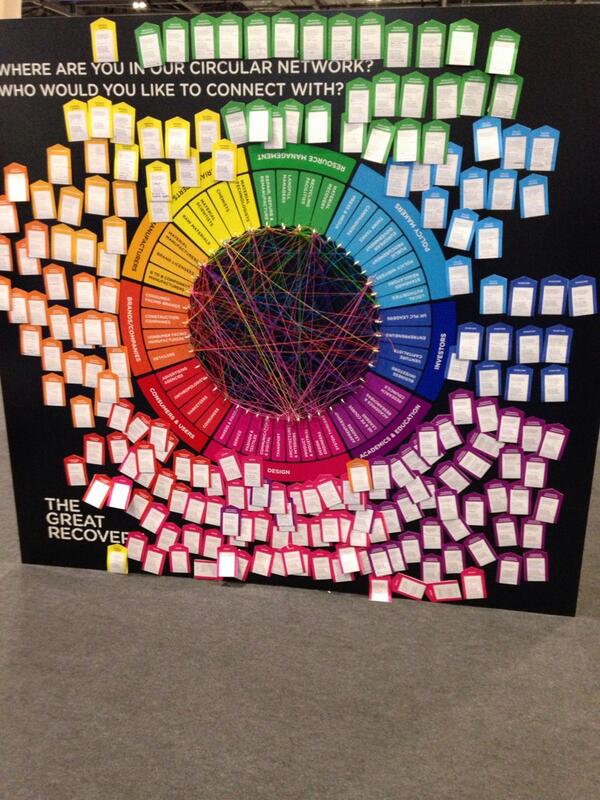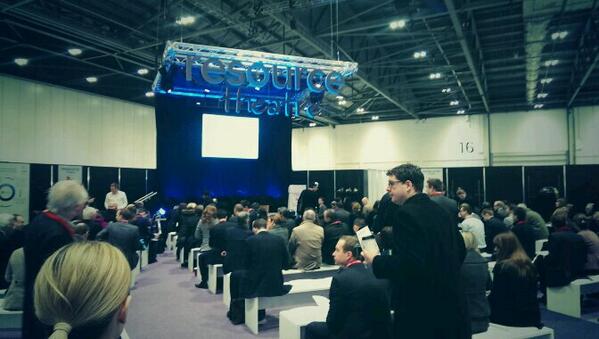Last week, players of the circular economy gathered in London for the resource event. The circular economy is a reaction to the current linear model that goes from extraction to production, use and ends with disposal. It aims to create an economic model that benefits from keeping materials in use. The players come from diverse backgrounds going from design, academia, investment, policy making, resource management, material experts, manufacturing, branding, to experts in consumers interests. Here are some insights from the event.
Nederlandse versie / Dutch version
Can a circular economic model be a framework for the innovation we need?
James Woudhuysen provoked that the circular economy can be a distraction from the decline of investment in innovation in Europe. In his argument he pointed out that many of the so-called sustainable innovations were things industries were doing anyway. If the principles don’t change, the circular economy will just be a fresh term or model applied to an old practise.
Michael Pawlyn pointed out that nature is a massive resource of inspiration to innovate. Human-made systems are mainly linear, nature works in closed loops. Interestingly, linear systems are resistant to change so it can maximise it’s outputs, whilst closed loop systems evolve and change constantly to optimise the system.
Walter Stahel advocated that a circular model is the fastest and most effective way to restore damaged capacity. This statement was supported by the case of the Pearl Harbor fleet being introduced back to service within a year after the attack. Energy consumption and greenhouse gas emissions can be reduced by 50 to 90% by restoring used instead of producing new, more efficient products. A transition to the circular economy can be far more effective than investing in energy efficiency.
Going from linear to circular
“Don’t let best become the enemy of good”
Quality is often seen as the barrier to reusing materials. But in an increasingly flexible world, great services often become more important than high quality products. An average office configurations stays for about 5-6 years. Why using top quality materials, lasting at least four times the functional lifetime which are also heavy to take in and out of the office? Fluteoffice is a brilliant example of high value, low-impact office furniture.
“The wealth of societies is based on stocks, not on flows.”
A linear model aims to minimise stocks by focusing on optimising material flows. The success of a circular model doesn’t depend on the speed at which materials move between players, but at the ability to preserve material quality.
“Small is beautiful”
Small loops are easier to be closed. At the moment there are only five facilities in the world that can recover materials from E-waste. Urban mining will be the buzz word for recycling materials at the point where they are used.
“Designers are multifaceted and humble”
Design requires iterations and a circular model, by its nature, allows iterations. Designers are good at understanding the bigger picture. A circular model will allow the role of the design community to be a shifted from driving product innovation to initiating system innovation.

The event was a great example that loops have no beginning and no end. The network around the circular economy is not a closed loop. It’s open to any player to connect, reconnect and to create new loops. The next main event with a focus on the circular economy will take place in Brussels during the Green Week from 3 to 5 June.

